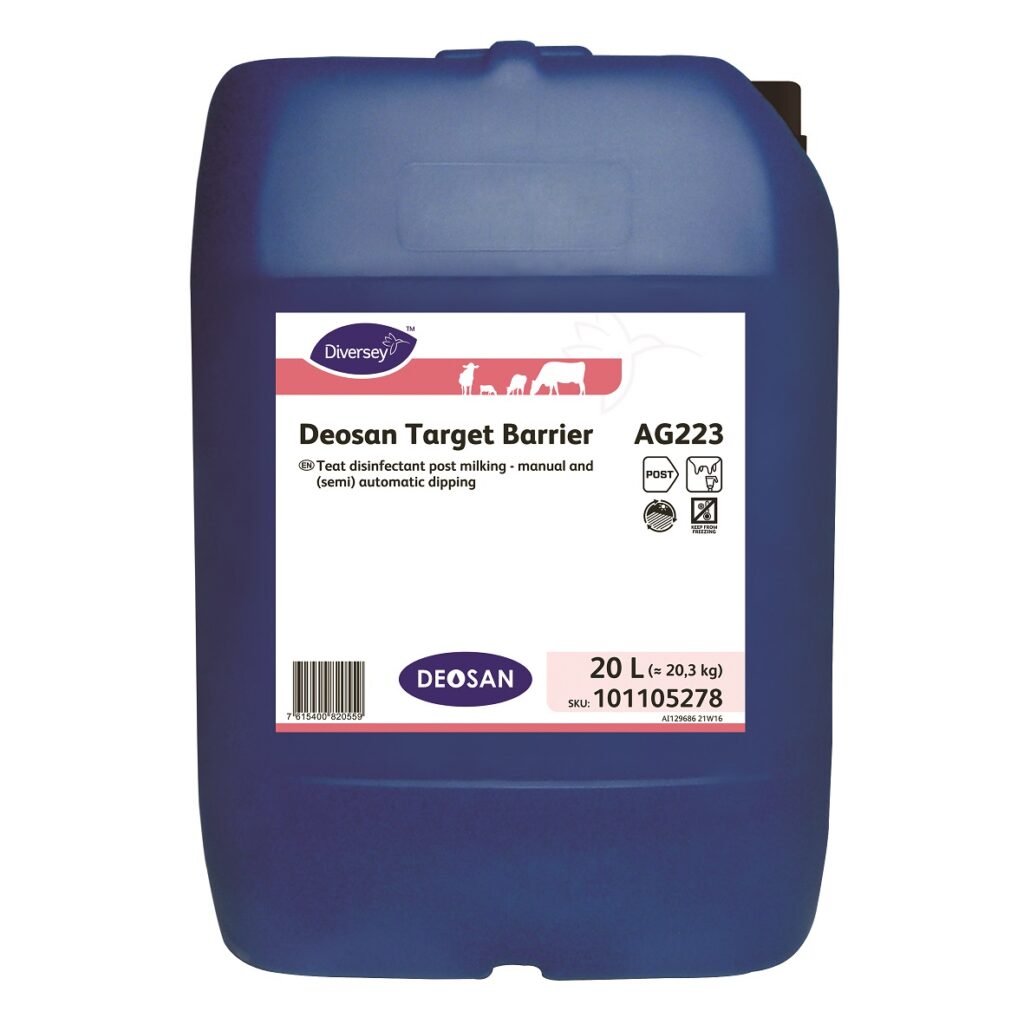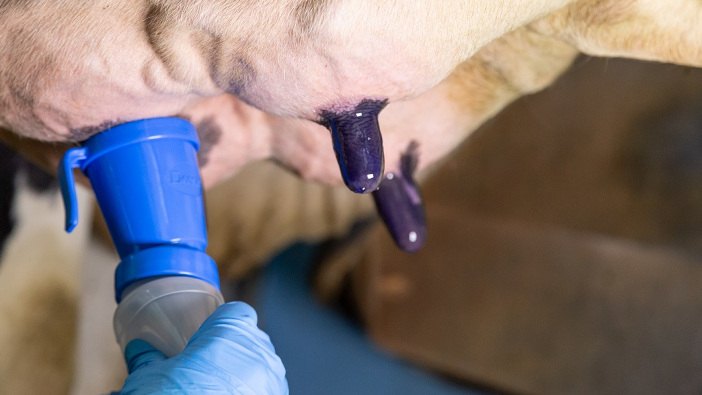Deosan, the dairy hygiene brand of Diversey, has launched a new post dip called Target Barrier. Containing chlorhexidine, used worldwide due to its effectiveness and skin conditioning properties. It’s said to be highly effective against bacteria, ideal for use at times of transition.
“Chlorhexidine has a strong affinity to skin, but without aggressive tendencies,” explained Alison Cox, Deosan global application specialist. “It is also less affected by organic material than some active ingredients and is rapidly taken up by bacteria – an essential quality for post milking applications. As a global company, we are seeing an increasing demand for a barrier product that is ready to use, protects the skin and offers highly effective protection, and this product meets all of these requirements.”
The product is said to be highly viscous for more accurate coverage and less waste, Ms Cox added, meaning that it stays directly on the teat skin, which allows the ingredients to get into all crevices of the skin.
“The precise selection of skin-friendly ingredients allows the 6000ppm chlorhexidine biocide freedom to deliver comprehensive skin disinfection. As a result, it is not only highly effective against bacteria, but also against yeast infections, both of which are commonly associated with mastitis infections.
“The addition of Glycerine and Allantoin also ensures the continuity of skin condition during challenging weather and transitional lactation periods; the teat skin retains moisture, and is softened and soothed between milkings.
“This can also remove the reliance on teat creams, which present little value in terms of disinfection, can become contaminated with flies and faeces, and add complexity to the milking routine. These products should not be needed in modern milk production. It is simply investing in the right product, at the right time, with the best ingredients, which will ensure that good teat skin condition is maintained.”

Ms Cox also said that barriers are seeing increased interest and are highly recommended at times of transition as challenges to the cow can lead to an increased risk of infection and teat health issues.
“Some people continuously use barrier products on the whole herd, due to their experience in seeing how teat condition improves. Others may use selectively, for example, on the fresh calvers or on the whole herd during the period of reintroduction to winter housing. Those that have a block calving herd, and either turn out or bring in the cows close to that time, would be advised to consider this product.
“Barriers also give the operator a direct ‘feel of each quarter’ at the end of milking with the dip application, enabling them to identify problems quickly, and encouraging prompt action to mastitis infection and teat skin issues if needed. This attention to detail can make significant differences in herd health and milk quality.
“I appreciate many farms use a post-milking product in a spray application, however, I would strongly suggest this be reviewed. Strategic use of Target Barrier dip can reduce the potential infection challenge associated with changeable weather, transitional management or high-stress lactation periods by ensuring the continuity of teat skin condition and optimised teat disinfection. It is a relatively easy practice that could save time and reduce reactive costs in the long run, “she concluded.
For more information go to www.diversey.com


